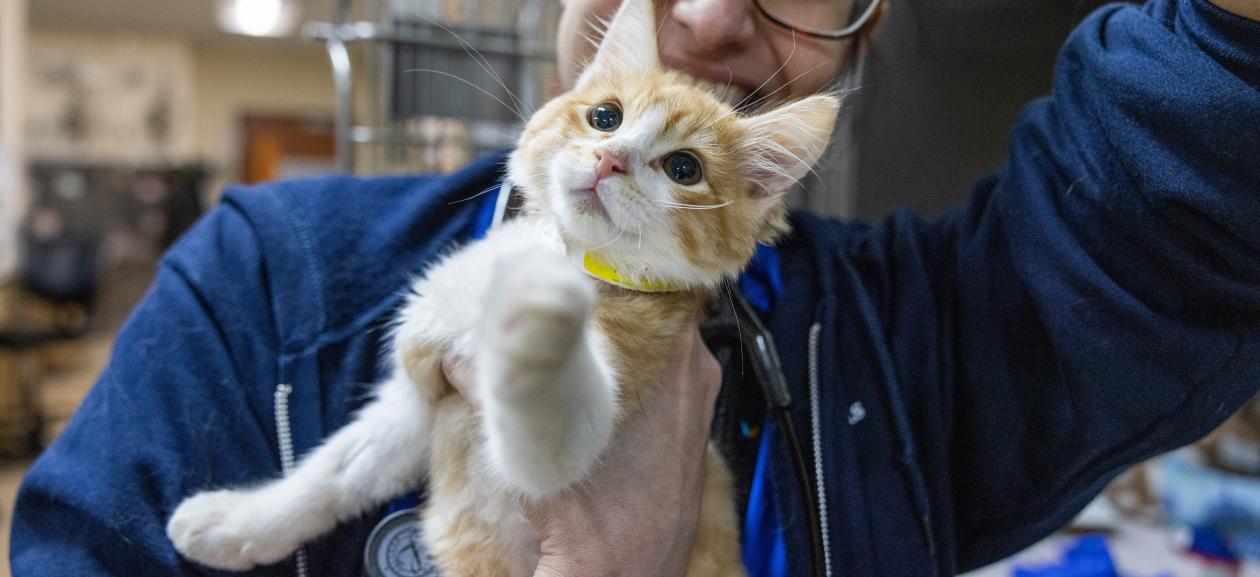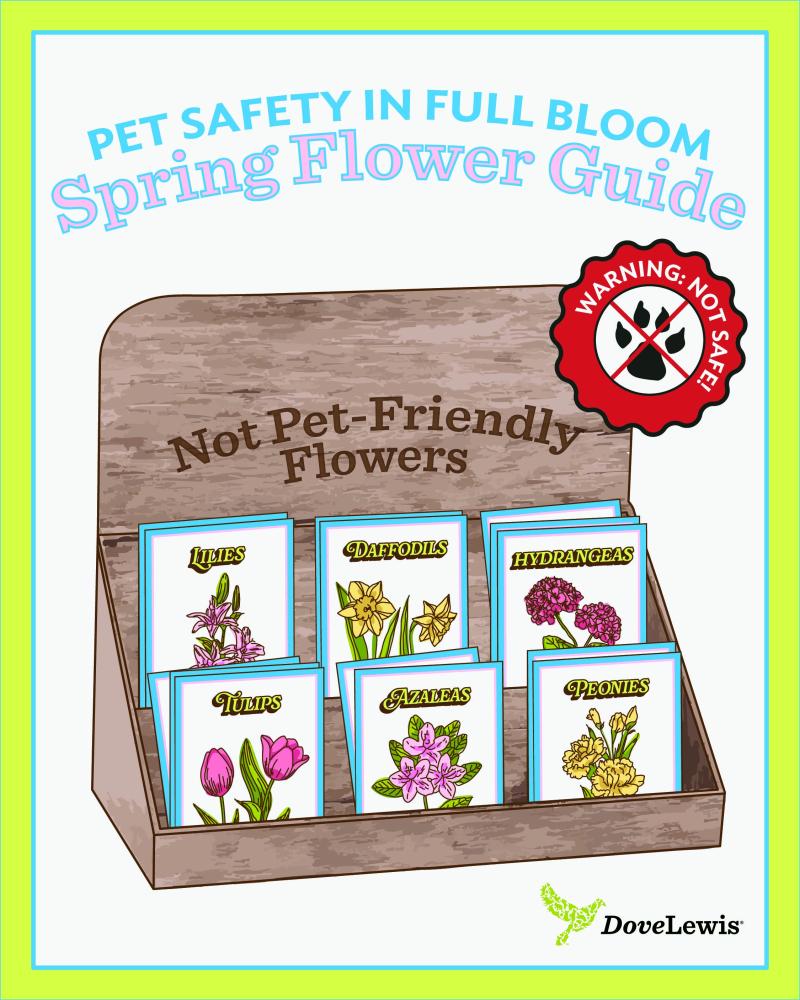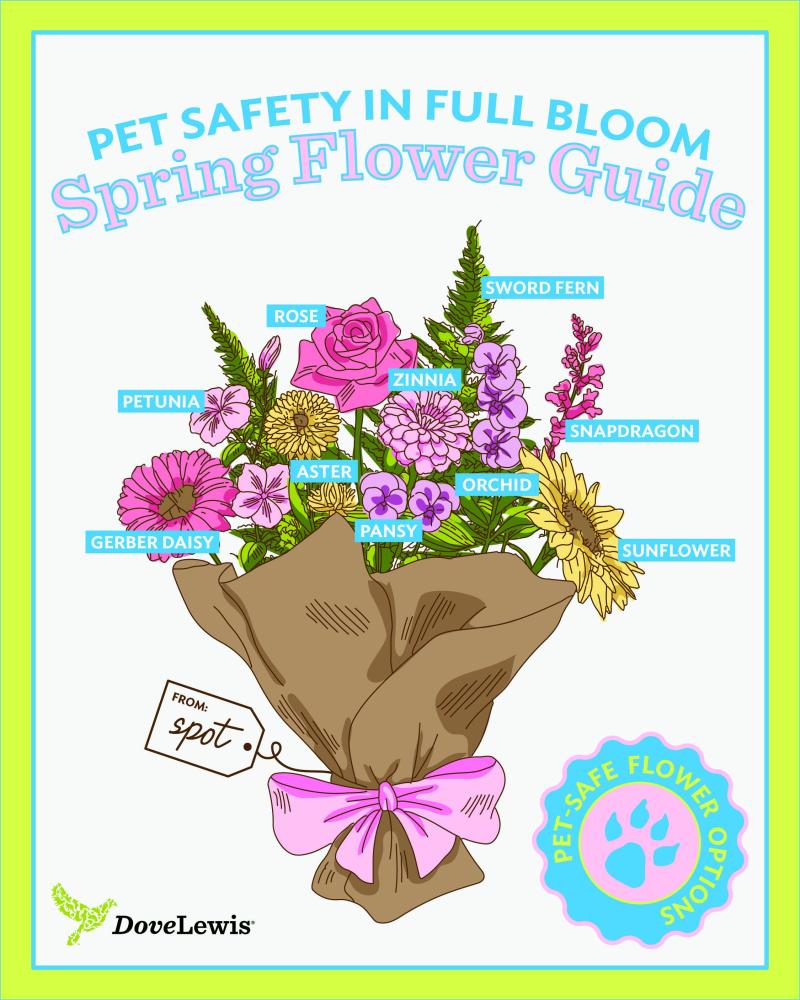
Pet Safety in Bloom: Which Flowers Are Dangerous for Pets?
Spring is in full bloom, bringing vibrant colors and fresh floral scents into our homes and gardens. However, while flowers are a beautiful way to welcome the season, pet owners should be cautious—many popular spring flowers can be highly toxic to dogs and cats. The arrival of spring means flower toxicity becomes a greater risk as many harmful plants reach their peak bloom.
“Many pet owners aren’t aware of the dangers that some flowers pose,” says DoveLewis Critical Care Specialist Dr. Hannah Marshall. “Being mindful of which flowers are safe can help keep your pets healthy and happy.”
Common Spring Flowers That Are Toxic to Pets
- Lilies (Easter, Tiger, Asiatic, Daylilies, and more)
- Cats: All parts of these lilies are highly toxic to cats. Even a small ingestion can cause severe kidney failure. Symptoms include vomiting, lethargy, and loss of appetite. Immediate veterinary attention is crucial.
- Dogs: While not as toxic as they are to cats, ingestion can still cause mild stomach upset.
- Tulips
- Dogs and Cats: While the plant itself is toxic, the highest concentration of toxins is in the bulbs. Ingestion can lead to significant stomach upset, depression, and possible intestinal obstructions.
- Daffodils
- Dogs and Cats: These contain lycorine, which can cause vomiting, diarrhea, abdominal pain, and even more severe symptoms like arrhythmias or low blood pressure if ingested in large amounts.
- Azaleas and Rhododendrons
- Dogs and Cats: Ingestion can result in vomiting, diarrhea, drooling, and, in severe cases, abnormal heart rhythms, tremors, or seizures.
- Hyacinths
- Dogs and Cats: These can cause intense vomiting, diarrhea, depression, and tremors, especially if large quantities of the bulbs are consumed.
- Hydrangeas
- Dogs and Cats: These contain cyanogenic glycosides, which can cause vomiting, depression, diarrhea, and other gastrointestinal issues if ingested.
- Peonies
- Dogs and Cats: May cause vomiting, diarrhea, and decreased energy when ingested.
- Eucalyptus
- Dogs and Cats: Contains essential oils that can cause drooling, vomiting, diarrhea, depression, and weakness if ingested.
Pet-Safe Alternatives for a Springtime Bouquet
If you love having fresh flowers at home but want to keep your pets safe, consider these non-toxic options:
- Roses
- Orchids
- Sunflowers
- Snapdragons
- Gerber Daisies
- Petunias
- Sword Ferns
- Zinnias
How to Keep Your Pets Safe
- Check Before You Buy – Before bringing new plants or flowers into your home, refer to the ASPCA’s list of toxic and non-toxic plants.
- Be Cautious with Bouquets – Many floral arrangements contain a mix of flowers, some of which may be harmful. When in doubt, remove any questionable blooms.
- Educate Your Family: Make sure everyone in the household, and anyone who may send you flowers, knows which plants are off-limits to animal family members.
- Know the Signs of Poisoning – Symptoms of plant toxicity can include vomiting, diarrhea, lethargy, difficulty breathing, and changes in heart rate. Seek veterinary care immediately if you suspect your pet has ingested a toxic plant.
If you believe your pet has been exposed to a harmful plant, DoveLewis is open 24/7 to provide emergency care. You can also contact the ASPCA Animal Poison Control Center at (888) 426-4435 for immediate guidance.
By being aware of these hidden floral dangers, you can enjoy a beautiful, pet-friendly spring season while keeping your four-legged family members safe and healthy.
Recent Posts
Why Chocolate Is So Risky for Pets
Milk or dark, candy or cake – chocolate may be one of our favorite sweet treats, but it’s definitely not meant to be consumed by our pets.
Holiday Hazards for Your Pet
Deck the halls with boughs of holly … but be sure it’s out of reach of your furry friends! It’s easy to get swept up in the festivities of the season, but don’t forget that added fun means added risks for your pets.






